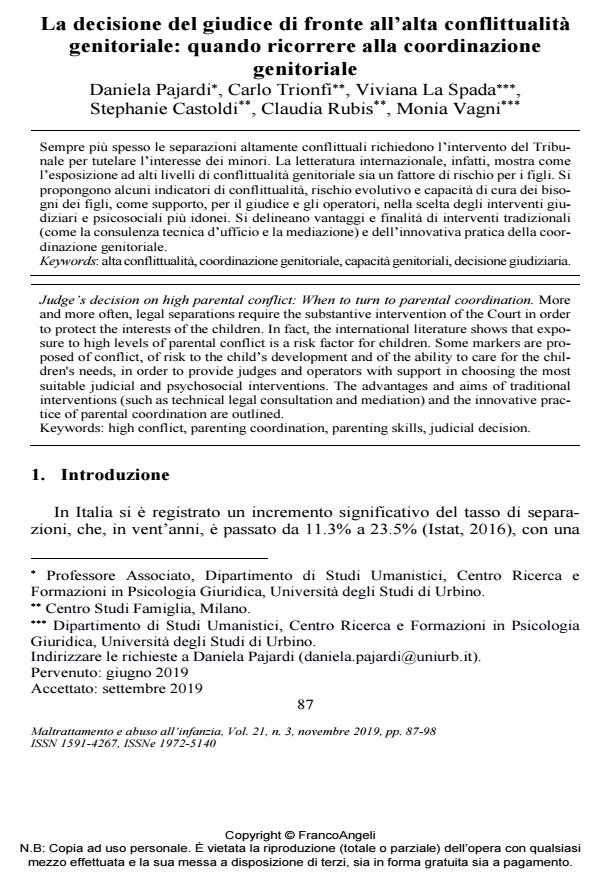Judge’s decision on high parental conflict: When to turn to parental coordination.
Journal title MALTRATTAMENTO E ABUSO ALL’INFANZIA
Author/s Daniela Pajardi, Carlo Trionfi, Viviana La Spada, Stephanie Castoldi, Claudia Rubis, Monia Vagni
Publishing Year 2019 Issue 2019/3
Language Italian Pages 12 P. 87-98 File size 388 KB
DOI 10.3280/MAL2019-003007
DOI is like a bar code for intellectual property: to have more infomation
click here
Below, you can see the article first page
If you want to buy this article in PDF format, you can do it, following the instructions to buy download credits

FrancoAngeli is member of Publishers International Linking Association, Inc (PILA), a not-for-profit association which run the CrossRef service enabling links to and from online scholarly content.
More and more often, legal separations require the substantive intervention of the Court in order to protect the interests of the children. In fact, the international literature shows that exposure to high levels of parental conflict is a risk factor for children. Some markers are proposed of conflict, of risk to the child’s development and of the ability to care for the children's needs, in order to provide judges and operators with support in choosing the most suitable judicial and psychosocial interventions. The advantages and aims of tradition-al interventions (such as technical legal consultation and mediation) and the innovative prac-tice of parental coordination are outlined.
Keywords: High conflict, parenting coordination, parenting skills, judicial decision
- Court-appointed expert consultation in Italy: an ethnographic study of parents’ beliefs, expectations, and experiences Antonio Iudici, Francesca Rainieri, Tania Fiorini, in Frontiers in Psychology 1668693/2025
DOI: 10.3389/fpsyg.2025.1668693
Daniela Pajardi, Carlo Trionfi, Viviana La Spada, Stephanie Castoldi, Claudia Rubis, Monia Vagni, La decisione del giudice di fronte all’alta conflittualità genitoriale: quando ricorrere alla coordinazione genitoriale in "MALTRATTAMENTO E ABUSO ALL’INFANZIA" 3/2019, pp 87-98, DOI: 10.3280/MAL2019-003007